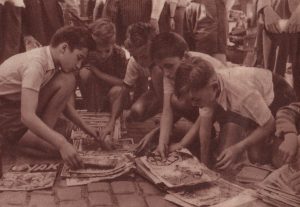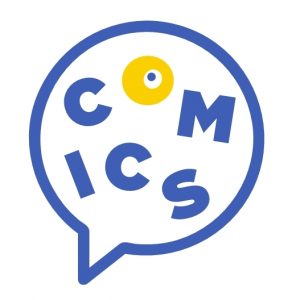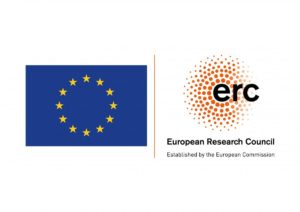Comics, the Children and Childishness
Ghent, Belgium, 18-19 September, 2023
Comics have often been dismissed as child’s fare. While comics scholars have long struggled with such dismissals, today they are more likely to run up against the stereotype that ‘comics are not just for children’ (Pizzino). The ‘for children’ snub has encouraged scholarship to focus on comics and graphic novels for adults. Although we have seen several exciting studies on the children in comics (Abate; Apostolidès, Chaney; Gordon; Saguisag) and comics for children (Abate and Tarbox, Heimermann and Tullis), most of which have appeared over the past decade, the many complex connections between comics and children remain understudied. These include but are not limited to:
- child characters and comics childhoods
- caricature and its closeness to, and inspiration from, childlike drawing styles
- the historically unstable status of comics as the medium transitioned into the realm of children’s culture and then out of it; contents, publication contexts and sociocultural factors contributing to changes in intended readerships
- the presumed childishness of the medium and the ways comics authors, readers and critics engage with it
Comics, the Children and Childishness seeks to disentangle these and other forms of interactions between comics and children. This follows the objectives of the COMICS project at Ghent University which focuses on children’s comics magazines, child characters in comics and graphic novels, young readers’ interactions (both programmed and unexpected) with their comics and children’s drawings.
The conference elaborates on two key strands: comics and children’s culture, especially print culture, and childishness and comics.
- Children’s (Print) Culture
The conference is keen on exploring the vast range of comics in children’s magazines, especially, but not only, from the early decades of the twentieth century, to map out the different roles accorded to comics, the kinds of comics associated with children’s culture and how conceptualizations of comics have varied in children’s print cultures. It hopes to interweave insights from comics studies, periodical studies and the broader field of childhood studies.
Possible questions to be broached include, without being limited to, the following:
What kinds of spaces were accorded to comics in children’s magazines?
What kinds of paratexts accompanied these comics?
How did comics sections change over time and across contexts?
How did comics interact with changing media landscapes?
What kinds of pedagogical and editorial influences molded (or ignored, or criticized) children’s comics and the publications in which they appeared?
This strand is also interested in transmedia interactions with children’s and youth cultures and the ways in which children interact with comics as readers and critics (Tilley) and as comics makers. Contributions on memories of childhood comics readings are also welcome. Further topics to explore therefore include:
Expansion of comics characters and storyworlds beyond printed pages;
Changes in reader segments (young, gendered, mixed, teen);
Interactive segments in magazines and other activities promoted by them, including children’s letter columns, competitions, games and clubs;
The retelling and revisiting of childhood memories of comics readings in comics and other media (novels, films etc.).
- Childishness
The second strand of the conference explores how notions of childishness affect critical and popular discourses around and within comics. Seeking reflections on a diverse range of comics, including self-published and unpublished works, such as children’s drawings incorporating comics, this strand also encourages contributions on the manifestations of childishness in comics for children. We hope to combine insights into comics forms and styles with new methodologies for better understanding unpublished, scattered and marginal materials. Once again transdisciplinary insights from comics studies, children’s literature and childhood studies are especially welcome.
Possible questions and topics include:
How does the labeling of comics as childish impact reading practices?
How has childishness impacted the reception of comics and how have artists and authors responded to it?
How can conceptions of childishness have an impact on comics styles, ranging from the imitation of childish styles to artists incorporating or taking inspiration from children’s drawings?
What are the possibilities for reading and interpreting childishness in comics stories and styles?
How do connotations of, and interactions with, childishness compare across comics for children, crossover comics and comics for adults?
What kinds of impact can different publication contexts and formats have on notions of childishness?
How can such reflections on childishness in comics benefit from insights on comictuous (see Beineke) corpora including children’s drawings, outsider art, doodles, and the more institutionalized visual and popular arts?
For the purposes of this conference, children include all non-adults. Comics is likewise understood to encompass a broad range of publications, from comic strips and zines to magazines with comics, comics albums and graphic novels. We welcome papers on comics cultures from all over the world, ranging from the earliest printed comics to contemporary publications.
The conference will be held in Ghent, Belgium, from 18 to 19 September 2023.
Please send abstracts of about 500 words and a brief bio note by 15 January 2023 to comics@ugent.be and to maaheen.ahmed@ugent.be.
Notifications of acceptance will be sent by 30 January 2023.

Image from Noël Bayon’s photo essay, La Bourse aux Illustrés, 1953
This conference is a COMICS activity, which has received generous funding from the European Research Council under the EU’s Horizon 2020 research and innovation program (grant no. 758502).


Selected Bibliography
Michelle Ann Abate, Funny Girls: Guffaws, Guts and Gender in Classic American Comics. University Press of Mississippi, 2018.
Michelle Ann Abate and Joe Sutliff Sanders, eds. Good Grief! Children and Comics. A Collection of Companion Essays. Ohio State University Libraries, 2016.
Michelle Ann Abate and Gwen Athene Tarbox, eds. Graphic Novels for Children and Adults: A Selection of Critical Essays. University Press of Mississippi, 2017.
Jean Marie Apostolidès, “Hergé and the Myth of the Super Child,” Yale French Studies no. 111 (2007), 45-57.
Bart Beaty, The Twelve-Cent Archie. Rutgers University Press, 2015.
Michael Chaney, “The Child in and as Comics,” Reading Lessons in Seeing: Mirrors, Masks and Mazes in the Autobiographical Graphic Novel, 57-94. University Press of Mississippi, 2016.
Jared Gardner and Ian Gordon, eds. The Comics of Charles Schulz: The Good Grief of Modern Life. University Press of Mississippi, 2017.
Mel Gibson, Remembered Reading: Memory, Comics and Post-War Constructions of British Girlhood. Leuven University Press,
Ian Gordon, Kids Comics: A Genre Across Four Countries, Palgrave, 2016.
Charles Hatfield, “Comic Art, Children’s Literature and the New Comics Studies,” The Lion and the Unicorn vol. 30, no. 3 (2006), 360-382.
Mark Heimermann and Britanny Tullis, eds., Picturing Childhood: Youth in Transnational Comics. University of Texas Press, 2017.
Christopher Pizzino, Arresting Development: Comics at the Boundaries of Literature. University of Texas Press, 2016.
Julia Round, Gothic for Girls: Misty and British Comics. University Press of Mississippi, 2019.
Lara Saguisag, Incorrigibles and Innocents: Constructing Childhood and Citizenship in Progressive Era Comics. Rutgers University Press, 2018.
Gwen Athene Tarbox, Children’s and Young Adult Comics. Bloomsbury, 2020.
Carol L. Tilley, “Children and the Comics: Young People Take on the Critics,” Protest on the Page: Essays on Print and the Culture of Dissent Since 1865, edited by James L. Baughman et al., 161-182. University of Wisconsin Press, 2015.